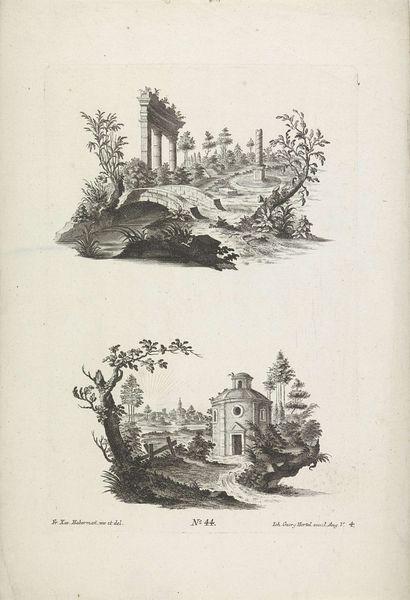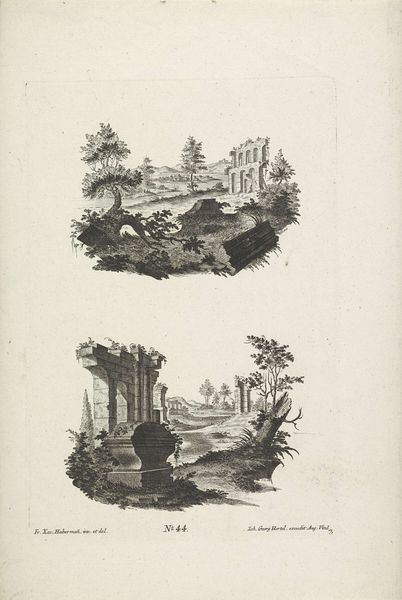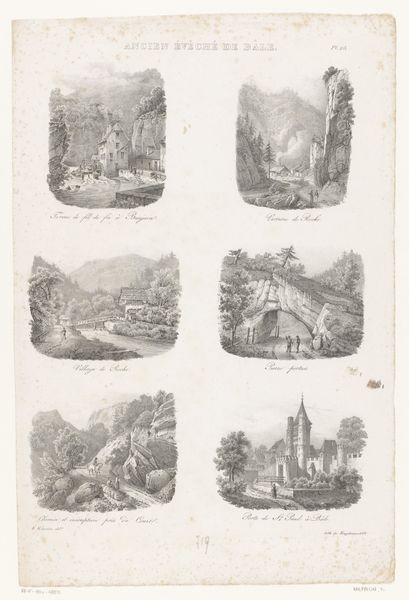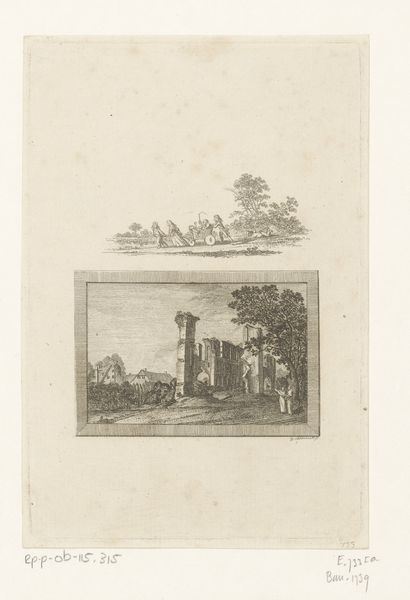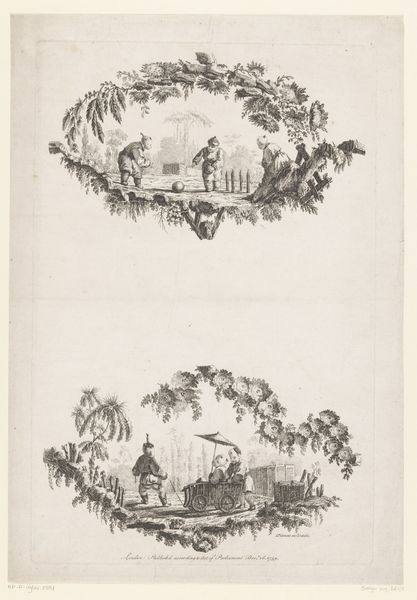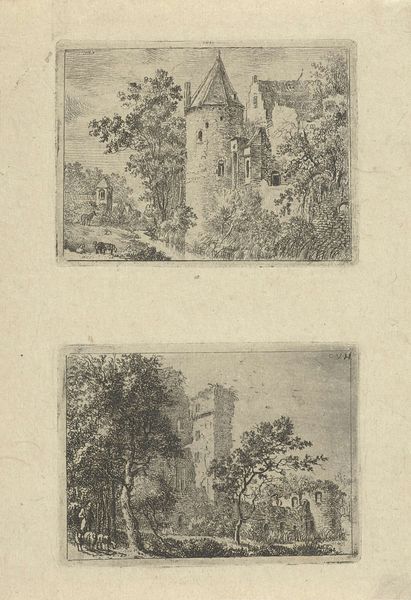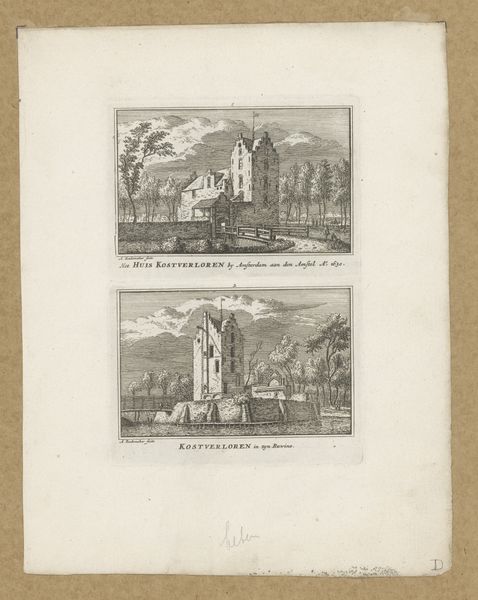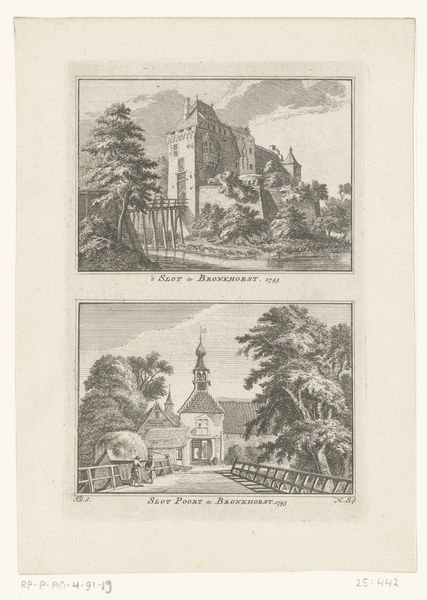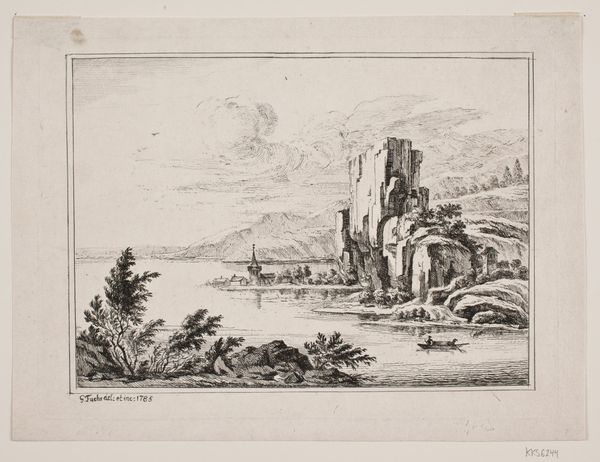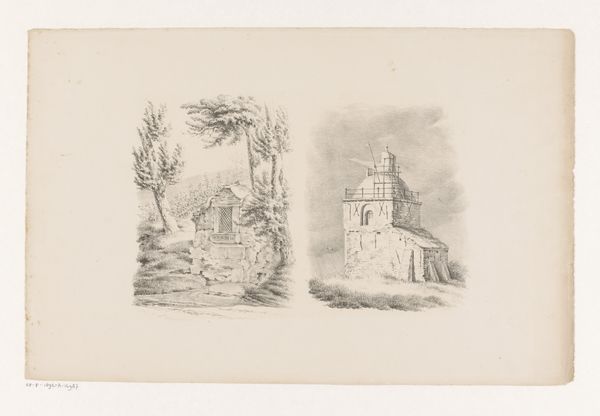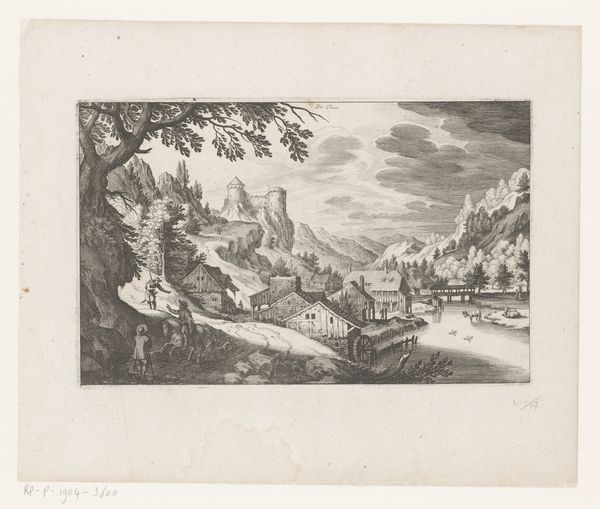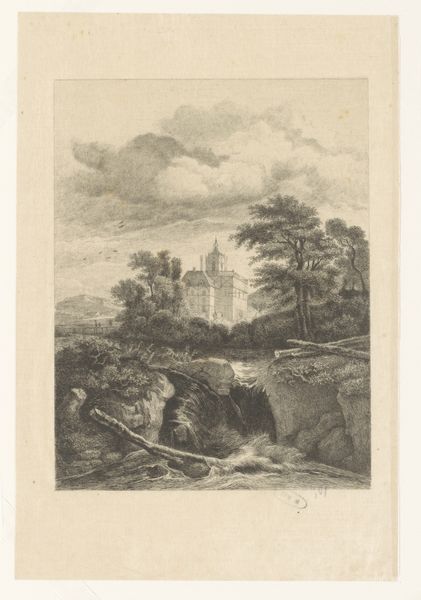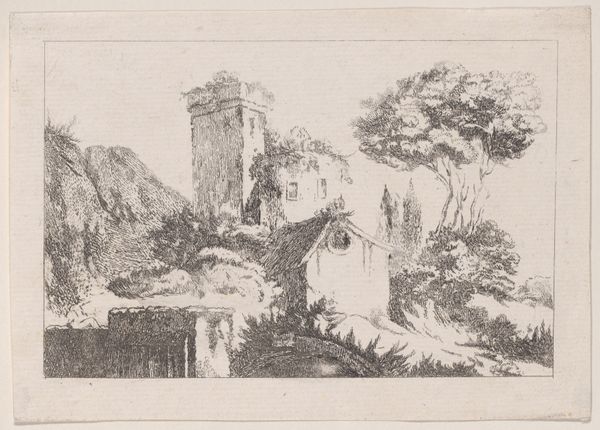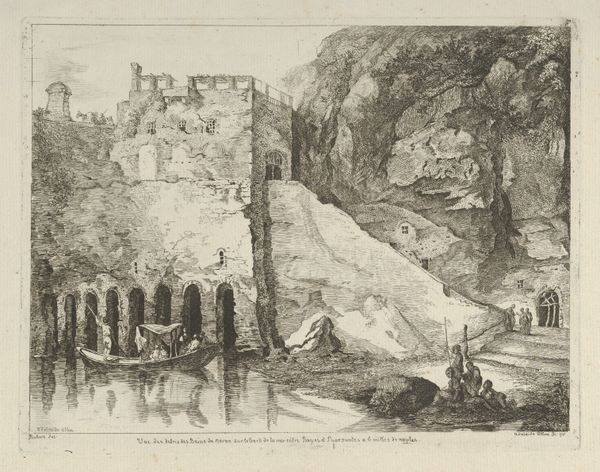
drawing, print, engraving
#
drawing
#
baroque
# print
#
landscape
#
cityscape
#
engraving
Dimensions: height 282 mm, width 188 mm
Copyright: Rijks Museum: Open Domain
Curator: What a striking image. We're looking at "Landschappen met brug en fontein," or "Landscapes with bridge and fountain," a print from sometime between 1731 and 1775. It resides here at the Rijksmuseum and is attributed to Emanuel Eichel. Editor: It's captivating! There's this decaying grandeur to it, a sort of melancholic beauty in the crumbling architecture overtaken by nature. I'm especially drawn to the textures achieved through engraving, like the roughness of the stone versus the delicate foliage. Curator: Indeed. Eichel uses that contrast deliberately, I think, to explore the popular 18th-century theme of the "ruin." Ruins became fashionable picturesque elements in garden design, evoking a sense of history and the transience of power. This was very much en vogue among the aristocratic classes. Editor: You know, considering it's a print, I’m thinking about the labour involved. Multiple stages for engraving this kind of intricate detail on the metal plates – the original artistic labour plus all the reproductions distributed, influencing landscape design among the elite who purchased these prints. It really highlights art as a commodity even back then. Curator: Absolutely. Prints like these facilitated the spread of aesthetic ideals and architectural trends. They weren’t merely decorative objects but tools for disseminating cultural values and reinforcing social hierarchies. This imagery would subtly shape expectations and reinforce societal norms of that time. Editor: So true, and beyond that, the materials are crucial – the paper, the ink, the metal plates. These components were commodities tied to specific production networks and trade routes. How readily available, and at what cost, were they? This probably would limit and inform the final work quite considerably, you know. Curator: Fascinating thoughts. It really demonstrates the multiple layers of interpretation that historical art offers. I'm particularly intrigued by the interplay of power, landscape design, and print culture, it highlights the crucial role these kinds of visual materials played. Editor: For me, this print emphasizes how something beautiful and aesthetically captivating is also deeply rooted in its material and production conditions. Examining those realities lets us unpack the intricate interplay of art, labour, and the culture from which they are grown.
Comments
No comments
Be the first to comment and join the conversation on the ultimate creative platform.
